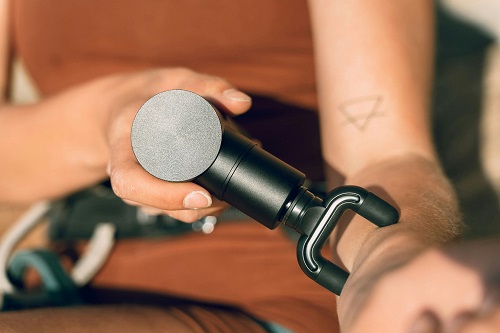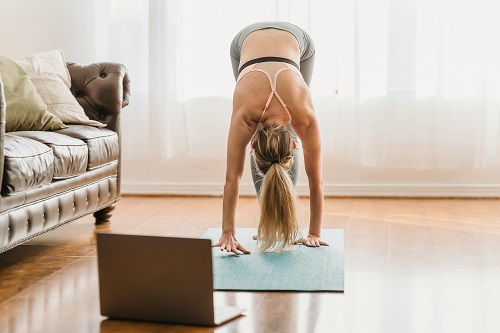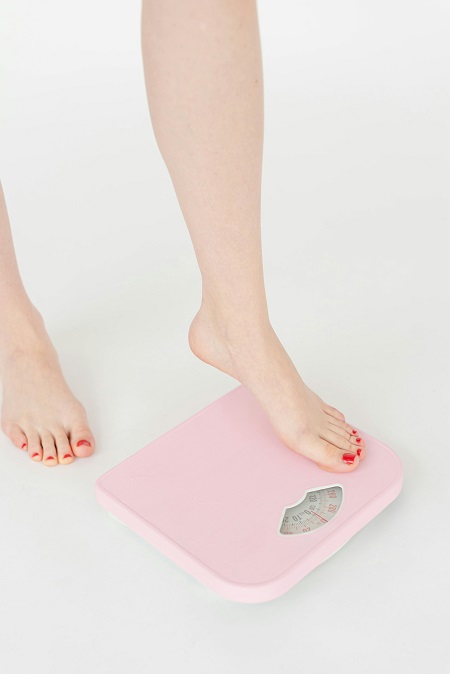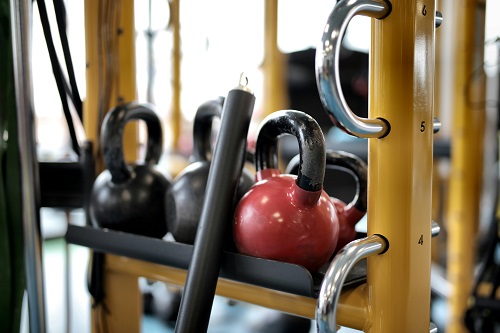We Approach Health and Fitness
In recent years, the rise of fitness gadgets and tools has significantly transformed the health and wellness landscape. As technology advances and fitness awareness grows, individuals are increasingly turning to innovative devices and tools to enhance their workouts, track progress, and optimize their health. Whether you are a seasoned athlete or just beginning your fitness journey, these gadgets and tools offer personalized, data-driven insights that can help you achieve your goals more efficiently and effectively.
This article will explore some of the most popular and impactful fitness gadgets and tools available today, examining how they work, their benefits, and how they can help users improve their overall health and fitness.
The Rise of Fitness Gadgets
Fitness gadgets and tools are becoming an integral part of many people’s daily routines. From wearable fitness trackers to smart gym equipment, these devices provide real-time data and feedback, enabling users to track their workouts, monitor their progress, and stay motivated. The increased adoption of fitness gadgets has coincided with a growing interest in data-driven health management, where users actively track various aspects of their fitness tools, such as heart rate, sleep quality, steps, calories burned, and more.
Additionally, fitness gadgets tools are now designed to be more user-friendly, offering sleek, stylish designs, easy-to-read interfaces, and seamless integrations with smartphones and fitness apps. This trend has made it easier for both beginners and advanced fitness enthusiasts to access the tools they need to stay on top of their fitness goals.
1. Wearable Fitness Trackers

Arguably the most popular category of fitness gadgets, wearable fitness trackers are designed to be worn throughout the day, collecting data on various metrics such as steps taken, distance traveled, calories burned, and heart rate. These devices help users monitor their activity levels, track progress, and set daily or weekly fitness goals.
Popular Wearable Fitness Trackers
- Fitbit: One of the most well-known names in wearable fitness technology, Fitbit offers a range of devices with features like step tracking, heart rate monitoring, sleep tracking, and even built-in GPS for outdoor workouts. Some Fitbit models also offer advanced features like stress management and guided breathing exercises.
- Apple Watch: The Apple Watch has become a leading choice for fitness enthusiasts, offering advanced tracking capabilities such as heart rate monitoring, ECG, blood oxygen levels, and activity rings that encourage users to close their rings by completing specific fitness goals tools throughout the day. It also integrates seamlessly with the iPhone and various fitness apps.
- Garmin: Garmin’s fitness trackers and smartwatches are designed with athletes in mind, providing advanced features such as VO2 max estimation, pulse oximetry, and detailed workout analytics. Garmin’s devices are especially popular among runners, cyclists, and swimmers.
- Whoop Strap: The Whoop Strap takes a more data-driven approach to fitness, offering in-depth insights into recovery, strain, and sleep. It is primarily subscription-based, providing ongoing insights into your fitness and recovery levels.
Benefits of Wearable Fitness Trackers
- Motivation and Accountability: Fitness trackers provide real-time feedback, helping users stay on track with their goals. They often come with features like goal setting, reminders, and challenges, making it easier for individuals to stay motivated.
- Health Monitoring: Beyond fitness, wearable trackers can help monitor key health metrics like heart rate variability, sleep quality, and stress levels. Some trackers can even provide insights into your mental and physical well-being, enabling users to make more informed decisions about their health.
- Data Integration: Fitness trackers are often connected to companion apps on smartphones, where users can view detailed graphs and reports of their progress over time. This integration makes it easier to analyze data and adjust workout routines accordingly.
2. Smart Workout Equipment
While wearable devices are fantastic for tracking personal activity, smart workout equipment is taking fitness to the next level by offering an interactive, connected experience. This equipment provides real-time feedback, personalized workout plans, and even virtual coaching to guide users through their fitness routines.
Popular Smart Workout Equipment
- Peloton: Known for its high-tech indoor cycling bikes, Peloton has revolutionized home fitness by offering live and on-demand classes led by expert instructors. With its large touchscreen display, users can access a variety of workouts, including cycling, running, strength training, yoga, and meditation.
- Tonal: Tonal is an innovative piece of smart gym equipment that combines strength training with digital technology. Its digital weights and AI-powered coaching allow users to perform weight-based exercises like never before, providing personalized guidance based on individual strength levels and progress.The sleek design blends seamlessly into any room, making it an attractive addition to the home. It offers a wide range of classes, from cardio and strength training to yoga and pilates.
- FightCamp: For those who enjoy boxing or kickboxing, FightCamp offers a connected boxing gym experience. The system includes a punching bag, gloves, and a tracker that measures metrics like punch speed, punch count, and overall intensity. Users can follow along with guided boxing workouts led by expert trainers.
Benefits of Smart Workout Equipment
- Personalized Training: Many smart fitness tools use AI and machine learning to adapt workouts to individual fitness levels, providing a more personalized training experience.By ensuring that consumers are continuously challenged, this helps them advance and stay off of plateaus.
- Convenience: With smart workout equipment, users can enjoy gym-quality workouts from the comfort of their own homes. This is particularly beneficial for those with busy schedules or those who prefer working out at home.
- Interactive Experience: The virtual classes, coaching, and real-time feedback provided by many smart fitness tools help create an engaging and immersive workout experience. These features can make exercise feel less like a chore and more like a fun, interactive experience.
3. Smart Shoes and Insoles
The latest development in fitness gadgetry is the rise of smart shoes and insoles. These devices are designed to provide valuable data on how you move and perform during workouts or daily activities, helping you optimize your technique and prevent injury.
Popular Smart Shoes and Insoles
- Nike Adapt: Nike’s Adapt line of shoes includes models that can be adjusted electronically to fit your foot better. Through an app, you can control the tightness of the shoe’s fit, making it easier to customize for specific activities such as running or weight training.
- Sensoria Fitness Socks: Sensoria offers a line of smart socks equipped with sensors that track metrics such as step count, cadence, distance, and even running form. These socks are designed for runners who want to analyze their gait and improve their performance.
- Biomechanics Insoles: Biomechanics insoles are designed to help users track their gait, posture, and foot strike. These smart insoles are often used by athletes to prevent injury and improve performance, offering data that can be used to adjust running techniques or other exercises.
Benefits of Smart Shoes and Insoles
- Improved Performance: By providing data on your form, technique, and foot mechanics, smart shoes and insoles help you optimize your movement patterns. This can lead to better performance, fewer injuries, and more effective workouts.
- Injury Prevention: Many smart insoles and shoes offer features that help prevent injury by analyzing your gait and offering suggestions on how to adjust your stride. This is particularly useful for runners and athletes prone to overuse injuries.
- Posture and Alignment: These devices can also monitor posture and alignment, providing feedback that helps you correct imbalances and prevent long-term issues like lower back pain or joint strain.
4. Smart Water Bottles

Hydration is a critical aspect of fitness, yet many individuals struggle to drink enough water during their workouts. Smart water bottles are designed to help users stay on top of their hydration goals by providing reminders and tracking water intake throughout the day.
Popular Smart Water Bottles
- HydraCoach: HydraCoach is an interactive water bottle that tracks how much water you drink throughout the day and gives real-time feedback on whether you’re on track to meet your hydration goals. It provides reminders and even displays motivational messages to keep you hydrated.
- HydrateSpark: This smart bottle tracks your water intake using a sensor and syncs with an app to help you stay hydrated. It even lights up to remind you to drink water, making it easier to remember to hydrate during workouts.
Benefits of Smart Water Bottles
- Hydration Reminders: Many smart water bottles send reminders to drink water at regular intervals, helping users stay consistent with their hydration goals. This can be especially helpful during intense workouts or on busy days when hydration can be easily overlooked.
- Real-Time Feedback: Smart bottles provide data on your hydration levels, allowing you to track your intake and adjust as needed. This helps prevent dehydration and ensures you are properly hydrated for optimal performance.
- Personalized Hydration Goals: Some smart bottles allow users to set personalized hydration goals based on factors like weight, activity level, and climate. This level of customization helps individuals stay hydrated in a way that suits their unique needs.
5. Recovery Tools
Recovery from exercise is equally as crucial as the actual exertion.f. A wide range of recovery tools and gadgets are now available to help users speed up recovery times, reduce muscle soreness, and improve overall well-being.
Popular Recovery Tools

- Theragun: The Theragun is a powerful handheld massage gun designed to relieve muscle tension and soreness. It uses percussive therapy to target deep layers of muscle, promoting blood circulation and reducing inflammation.
- Compex Muscle Stimulator: Compex uses electrical muscle stimulation (EMS) to promote muscle recovery by applying electrical impulses to muscles, which helps increase circulation and accelerate healing.
- NormaTec Recovery System: This device uses pneumatic compression to improve circulation and reduce muscle soreness. It is commonly used by athletes to help speed up recovery after intense workouts or competitions.
Benefits of Recovery Tools
- Muscle Relaxation: Recovery tools like massage guns and muscle stimulators help relax tight muscles, reduce soreness, and promote faster recovery.
- Improved Circulation: Many recovery tools focus on enhancing blood flow, which accelerates the removal of metabolic waste products from muscles, improving recovery and reducing fatigue.
- Reduced Injury Risk: By improving recovery times and reducing muscle tension, these tools can help prevent overuse injuries and muscle strains.
Conclusion:
Fitness gadgets and tools are revolutionizing the way we approach exercise and health. From wearable trackers that monitor activity and heart rate to smart workout equipment that offers personalized training, these devices help individuals optimize their fitness routines, stay motivated, and track their progress. Whether you’re looking to enhance your performance, prevent injury, or simply stay healthy, there is a fitness gadget or tool that can meet your needs. As technology continues to evolve, we can expect even more innovative devices to further enhance the way we approach fitness and well-being, making it easier than ever to achieve our health and fitness goals.
FAQ:
1. What are health and fitness gadgets?
They’re smart devices that track your physical activity, health stats, and workouts—like smartwatches, fitness bands, or smart scales.
2. What do fitness gadgets track?
Steps, heart rate, sleep, calories burned, workouts, and sometimes even stress and oxygen levels.
